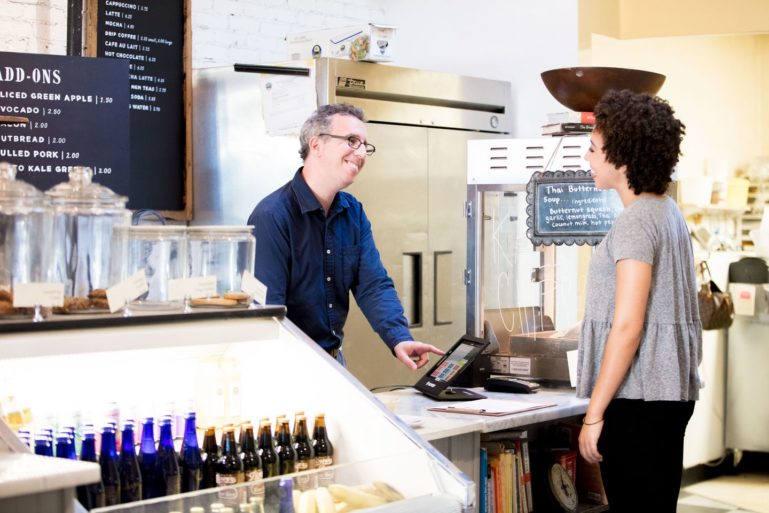
Pro Tips: How to Manage a Fast Food Restaurant
If you’ve recently opened a fast food restaurant or received a promotion to manager, there are a few critical skills you’ll need to master if you want to be successful in the restaurant industry.
The difference between a profitable cafe and one that closes in six months is the management team’s ability to incorporate efficient work procedures, expert analysis of sales and inventory, and consistent adherence to best practices are the hallmarks of a well-run business.
If you’re ready to learn how to manage a fast food restaurant, successfully, please read on.
Defining Management Levels
Depending on the organizational structure of your fast-casual eatery, your management team may look a little something like this:
General Manager
The General Manager (GM) is responsible for the overall operation of the restaurant. They’re the ‘big boss,’ and all business decisions ultimately pass through them. With national fast food chains like Burger King or Taco Bell, each location will have one general manager.
Assistant Manager
Under the GMs, there may be one, or a series of Assistant Managers. If it’s the latter, they are further sub-categorized into different areas of responsibility.
Kitchen Manager
The Kitchen Manager will supervise all aspects of the kitchen such as hiring the kitchen staff, food preparation, and purchasing food inventory.
Dining Room Manager or Floor Manager
These managers are responsible for the front of house (FOH) service staff to ensure operations are running smoothly and customers are satisfied.
Some operations use a slightly different format with the General Manager overseeing all activities and a series of shift supervisors on duty to handle guest complaints and facilitate communication between the kitchen and service staff.
A good General Manager will have several years of experience as an Assistant Manager, including both kitchen and dining room expertise. While a bachelor’s degree in hospitality isn’t always a requirement, it can enhance their qualifications and pay scale.
Assistant Restaurant Managers are an entry-level position. Many people get promoted to this role because of their successful performance as a server, bartender, or cook.
Every restaurant in the fast-food industry operates slightly different than the next, so find a management style that works best for your unique business needs.

Hiring for Success
Unless you’re hiring for a manager role, many entry-level fast-food jobs pay minimum wage — which can vary by state — and don’t require an advanced skill set. Most employees are considered part-time but, there might be a few non-manager full-time employees as well.
To make sure you get the best pool of candidates, you want to create a thorough job description that outlines all the duties the applicant will perform day-to-day as well as any special circumstances that may arise such as catering an event or corporate lunch. Also, make sure you post the job to job boards your ideal employee is most likely to read.
For instance, Indeed is a great national job search platform that caters to a wide variety of job types. From corporate executives with a Master’s degree to your eatery’s next part-time employee, a wide array of people search for jobs on Indeed.
Pro Tip: Offering above the minimum will usually net you a better caliber employee and reduce turnover.
Lastly, although servers and bartenders are tipped employees, you may attract more personable salespeople by offering a bit more per hour. Some states require tipped employees are paid at the minimum wage rate. So, be sure to factor this into your hiring decisions about the amount to pay your staff.
SEE ALSO: The True Cost of Bad Employee Management
How Important is Training?
Just as proper hiring can reduce staff turnover, so can adequate employee training. Employees who understand how to do their jobs are fully aware of what’s expected of them, and the strategy driving the process, will perform better than those that lack this level of awareness.
Pro Tip: Completely train your staff to perform all duties, as well as what to do when the unexpected happens (and in the restaurant business, always expect the unexpected) to give them a sense of security in their abilities and make them better-functioning employees.
Well-trained employees are also efficient employees. Team members who understand the expectations of their jobs can work with less supervision. A competent team reduces the amount of time it takes to complete work. Less time working equals a decrease in labor costs for you.
A well-trained, efficient cook on your line reduces food errors (waste), works efficiently, and probably has plenty of on-the-job knowledge under his or her belt. The same goes for your FOH service staff. A well-trained cashier will reduce order mistakes and get customers through the line faster — all things that have a positive impact on your bottom line.
Cut Down on Food Waste
Your food cost can quickly escalate if you don’t train your staff to make the dishes and appropriately portion ingredients properly. If the meal calls for three ounces of chicken but, your kitchen staff regularly serves four ounces portions, your chicken costs are going to climb quickly.
Pro Tip: Spot check several times during each shift – weigh the items on a food scale, or with a measuring cup or spoon as your kitchen staff is preparing it.
A picture is worth a thousand words. Your training materials should show detailed photos of what a correctly prepared and portioned menu item should look like. Many places also have these illustrations above the kitchen line for easy reference.

Responsible Cash Handling
You can’t remain profitable if you aren’t taking in tenders correctly. Thus, your cashiers have an impact on your profitability. Teaching them to accurately count cash received and cash due as the change to the customer is cashiering 101.
Teach them to state the total amount of the order to the customer when it comes time to pay. When the customer presents the cash, the cashier will respond, out loud, the amount the customer is giving them. Once the cashier enters the tender amount into the Point of Sale (POS) system, they will count out the change due and state that amount to the customer as they hand them the change.
This verbal exchange of cash tendered can help eliminate any discrepancies between the customer and the cashier, and keep everyone honest.
Pro Tip: To reduce the likelihood of theft, have your cash drawers locked and accessible only to the cashiers assigned to them and the FOH manager on duty.
Your cashiers should never share drawers – this limits the number of people taking cash out of each till. If there is a shortage at the end of the shift, then the number of people responsible should only be the cashier or the manager.
The Right POS System
At the core of any successful fast-casual establishment is a great POS system. Beyond all of the other significant benefits, POS software can provide for your small business, communication of orders between FOH and BOH is essential for customer satisfaction.
It also decreases food waste, which includes orders that are made incorrectly due to lack of communication and, therefore, must be scrapped. When your servers correctly input orders and each request is processed accurately, the more profitable you’ll be.
POS operations are important. We’ll come back to this a few times in the coming sections, but as a communication vessel, it’s an input device at the point of purchase that takes the order and sends a ticket to the kitchen to start preparing the order.
The kitchen then prepares the order and the finished food is consolidated by an expeditor system – usually by a person reading the tickets and assembling each customer order. Finally, the complete, accurate order is ready for the customer.
Pro Tip: Your cooks should be instructed to read the abbreviations on each ticket, including any modifiers or special instructions.
Product Inventory Management
One of the benefits of a great POS system is the ability to manage product inventory. You can track quantities on-hand and set reorder triggers, so you never run out of your most popular items. Also, restaurants will want to track Cost of Goods Sold (COGS) and item ingredients or raw goods that go into creating the end product.
For instance, if a classic burger is one of your menu items, you’ll also want to track the cost of the bun, lettuce, and tomato that are also part of that menu item.
Tracking raw goods and is a great way to keep tighter control of your food and beverage cost.
Pro Tip: The ideal food cost benchmark for Quick-Service Restaurants (QSR) is 29 percent.
Physical Inventory Management
Managing your physical inventory begins with an organized storage area. Each item should have a home, clearly labeled, and with a ‘par’ set so you can quickly develop your orders each week.
Pro Tip: The correct receiving process includes rotating your stock in a First In, First Out manner.
The items soonest to expire are used first, ensuring that you always have fresh product rotating through. When you put away delivers, your staff must put the new items in the back and move existing stock to the front to facilitate your FIFO system.
Spot check your deliveries, mainly produce and protein, for quality. If there are sub-par items or a question of freshness, your supplier should replace the item.
Your POS will help you forecast how much of each item you’ll need for the week. Use these numbers to anticipate how much of each ingredient you use in a typical week. For example, if you use six cases of fries on a weekday and ten on the weekend, you can set par levels – the number of each item you have on hand.
Although you must have enough of each item to serve your guests, you can’t make money if it’s tied up on your shelves. Order what you need, not an excessive amount.
Menu Items
The fewer items you have or any overlapping ingredients among menu items, the less individual ingredients you’ll need to purchase. Ingredients that can be used for many of your dishes might include, for example, eggs, ground meat, or chicken — all items that you can purchase in bulk.
Pro Tip: A cost-effective menu is a concise menu.
Usually, vendors give better rates if you’re able to purchase items in bulk quantities. If you have an extensive, unwieldy menu with dozens of ingredients and little overlap between dishes, you’ll soon start to see more food spoilage than is healthy for your bottom line.
Pro Tip: No matter how good your food is, there will be some items that are duds among your customer base.
Even though these dishes don’t sell as fast as more reliable sellers, you still need everything on hand to create them. If you only use half a box of an ingredient before it goes bad, its waste is going to impact your food cost negatively.
SEE ALSO: Order Up! Your Restaurant Menu Pricing Strategy
What are Your Customers Ordering?
Speaking of best and worst sellers, your POS can provide reports on what your customers are ordering. If you think everyone loves your Cajun chicken salad, but you only sell a few orders per day, perhaps it’s time to eliminate, or ‘86’ it from your menu. Pick your best sellers, and hone their creation until they’re the best-quality food of their type on the market.
Pro Tip: Menu planning isn’t a time to become sentimental about your favorite meal. It’s a numbers game, and the dishes with the highest numbers should stay on your menu.
The Bottom Line
Knowing how to manage a fast food restaurant involves many different responsibilities from hiring and firing to inventory management and forecasting. However, with the right tools, the right team, and the right leadership you’ll have a recipe for success.
Want to try ShopKeep for yourself?
Just answer a few easy questions.
Need help finding the right point of sale?
Just complete the form. We’ll call you right back to explain how ShopKeep can work for you.
Hit the ground running.Sprinting, in fact!
Read our free, comprehensive guide, Small Business 101, to learn all you need to know about starting a thriving business.

